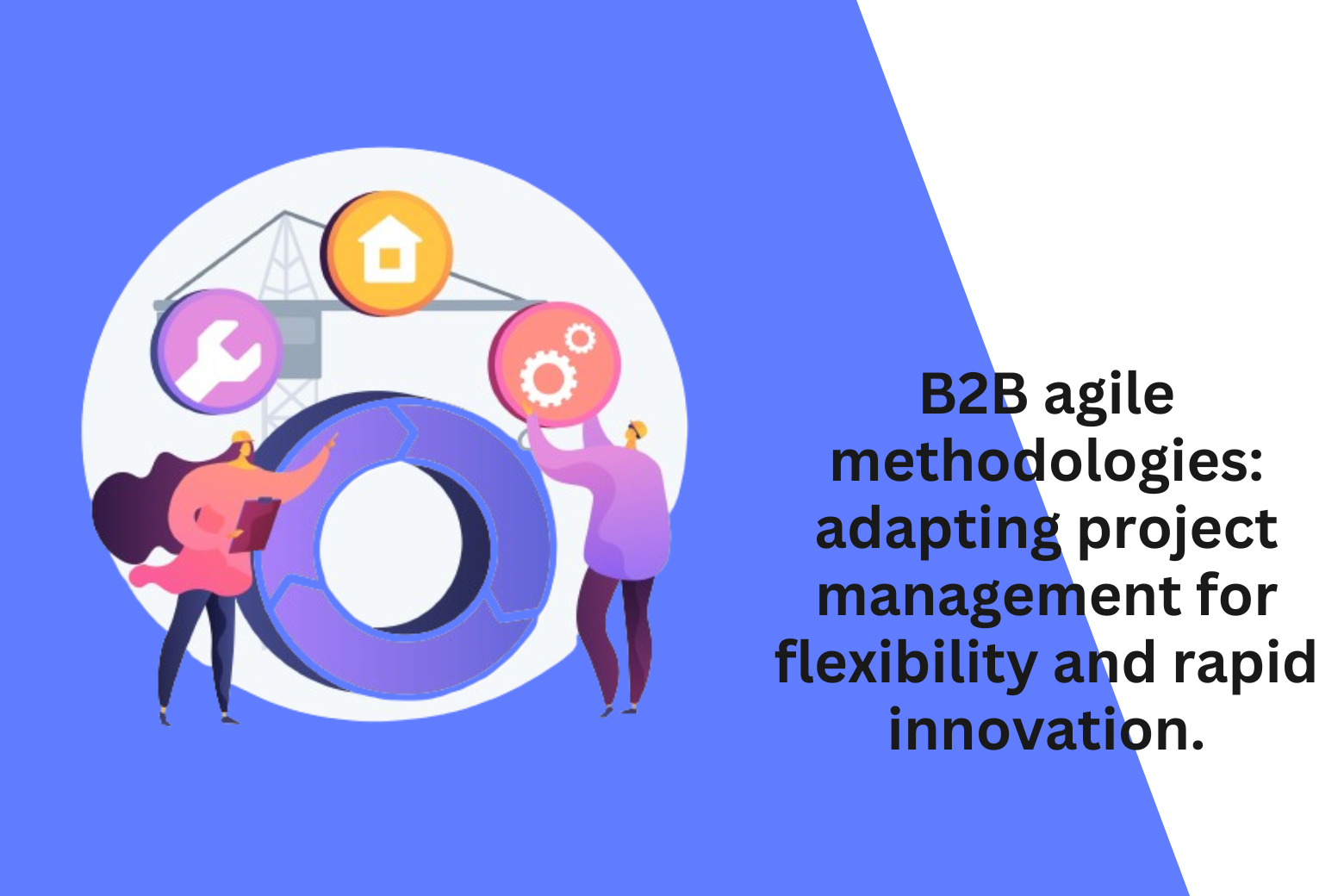
Implementing Agile methodologies in B2B project management involves adapting flexible and iterative approaches to enhance collaboration, respond to change, and achieve rapid innovation. Here’s a guide on how B2B organizations can embrace Agile methodologies for increased flexibility and innovation:
1. Agile Principles in B2B Project Management:
Customer Collaboration over Contract Negotiation:
- Application: Engage closely with B2B clients throughout the project, fostering collaboration and adapting to evolving requirements.
- Benefit: Better alignment with client needs and faster response to changes.
Responding to Change over Following a Plan:
- Application: Embrace change in project requirements and priorities, adjusting plans iteratively.
- Benefit: Improved adaptability to market shifts and client feedback.
Deliver Working Solutions Regularly:
- Application: Break down projects into manageable increments and deliver functional components regularly.
- Benefit: Continuous delivery of value and early validation of work.
Collaborative, Self-Organizing Teams:
- Application: Foster cross-functional teams that can adapt and make decisions collaboratively.
- Benefit: Enhanced creativity, productivity, and responsiveness within teams.
Regular Reflection and Continuous Improvement:
- Application: Conduct regular retrospectives to assess processes and identify areas for improvement.
- Benefit: Ongoing optimization of project workflows and outcomes.
2. Scrum Framework in B2B:
Scrum Roles:
- Application: Assign roles such as Scrum Master, Product Owner, and Development Team to facilitate collaboration and responsibility.
- Benefit: Clear responsibilities and streamlined communication.
Sprints:
- Application: Break projects into time-boxed sprints, typically 2-4 weeks, with defined goals for each sprint.
- Benefit: Incremental progress, regular feedback, and adaptability.
Daily Stand-ups:
- Application: Conduct daily stand-up meetings for quick updates on progress, challenges, and plans.
- Benefit: Improved communication, issue resolution, and team alignment.
Backlog Prioritization:
- Application: Maintain a product backlog with prioritized features, allowing for flexible adjustments based on changing requirements.
- Benefit: Continuous alignment with evolving business needs.
Product Increment:
- Application: Deliver a potentially shippable product increment at the end of each sprint.
- Benefit: Frequent value delivery and the ability to pivot based on client feedback.
3. Kanban Method in B2B:
Visual Boards:
- Application: Implement visual boards to represent the flow of work through different stages of the project.
- Benefit: Increased visibility, better task management, and identification of bottlenecks.
Work-in-Progress (WIP) Limits:
- Application: Set limits on the number of tasks in progress to optimize flow and avoid overloading the team.
- Benefit: Improved focus, faster completion of tasks, and reduced multitasking.
Continuous Delivery:
- Application: Strive for continuous delivery of completed work items, avoiding batch processing.
- Benefit: Enhanced flexibility, responsiveness, and client satisfaction.
Cycle Time Analysis:
- Application: Analyze cycle times for different tasks to identify opportunities for efficiency improvements.
- Benefit: Data-driven decision-making and continuous process optimization.
4. Adapting Agile to B2B Challenges:
Client Collaboration:
- Adaptation: Involve clients in sprint reviews, feedback sessions, and planning meetings.
- Benefit: Closer alignment with client expectations and real-time feedback.
Complex Requirements:
- Adaptation: Break down complex projects into smaller, manageable components for incremental delivery.
- Benefit: Improved manageability, faster progress, and reduced risk.
Interdepartmental Collaboration:
- Adaptation: Foster collaboration between different departments involved in B2B projects.
- Benefit: Streamlined communication, better understanding of diverse perspectives.
Risk Management:
- Adaptation: Embrace a risk-aware mindset, identifying potential risks early and adapting plans accordingly.
- Benefit: Proactive risk mitigation and increased resilience.
5. Tools and Technologies:
Collaboration Platforms:
- Tools: Use collaboration tools like Jira, Trello, or Asana to facilitate communication and project tracking.
- Benefit: Enhanced visibility, streamlined communication, and centralized project management.
Communication Channels:
- Tools: Leverage communication tools such as Slack or Microsoft Teams for real-time collaboration.
- Benefit: Improved communication, quick issue resolution, and team cohesion.
Automation and Integration:
- Tools: Implement automation tools and integrations to streamline repetitive tasks.
- Benefit: Increased efficiency, reduced manual effort, and faster delivery.
Conclusion:
Adopting Agile methodologies in B2B project management involves embracing principles and frameworks that prioritize flexibility, collaboration, and iterative progress. Whether applying Scrum, Kanban, or a hybrid approach, B2B organizations can enhance their ability to respond to changing client needs, deliver value incrementally, and foster a culture of continuous improvement. The key is to tailor Agile practices to the specific challenges and dynamics of B2B projects, ensuring adaptability and innovation in a rapidly evolving business landscape.



